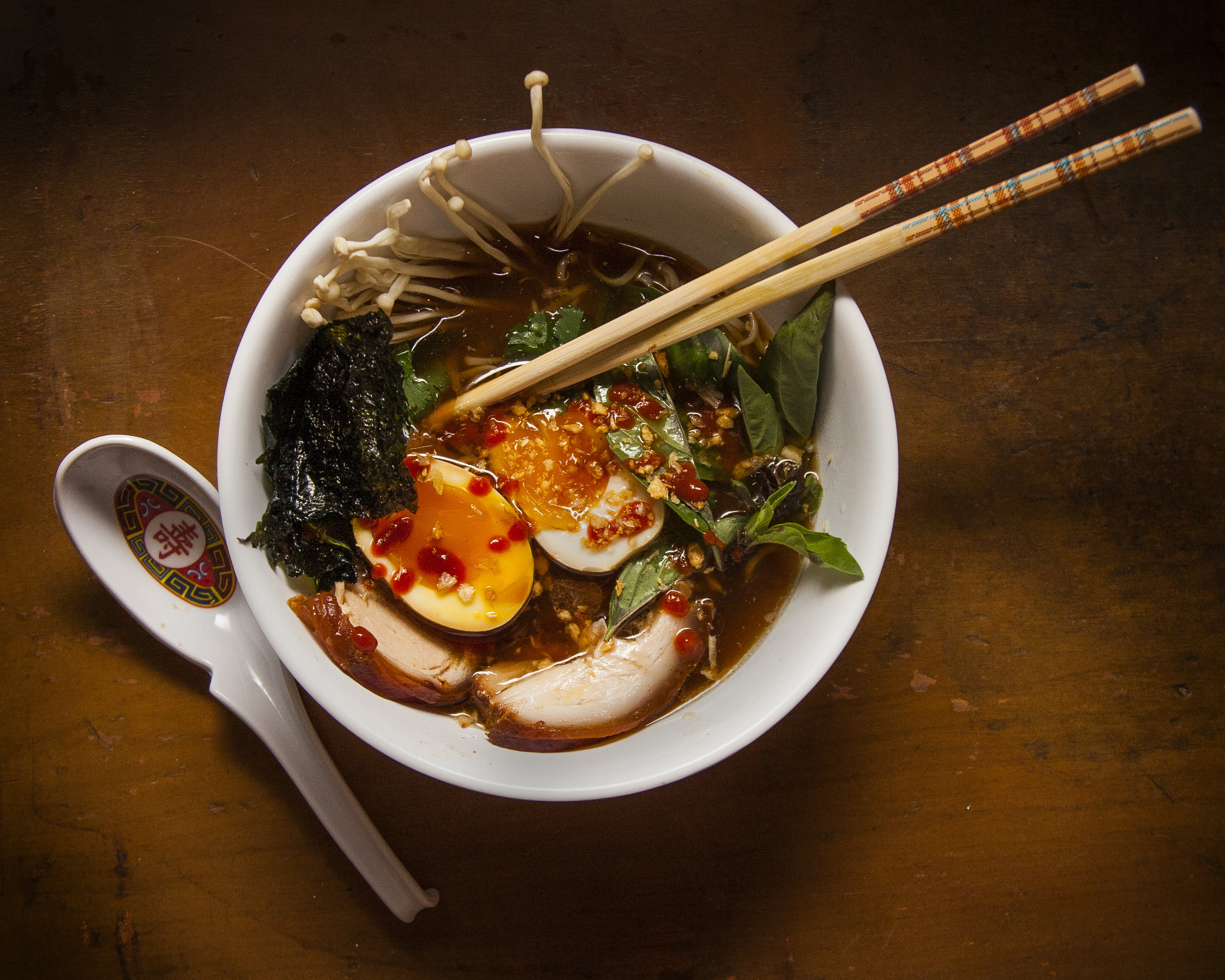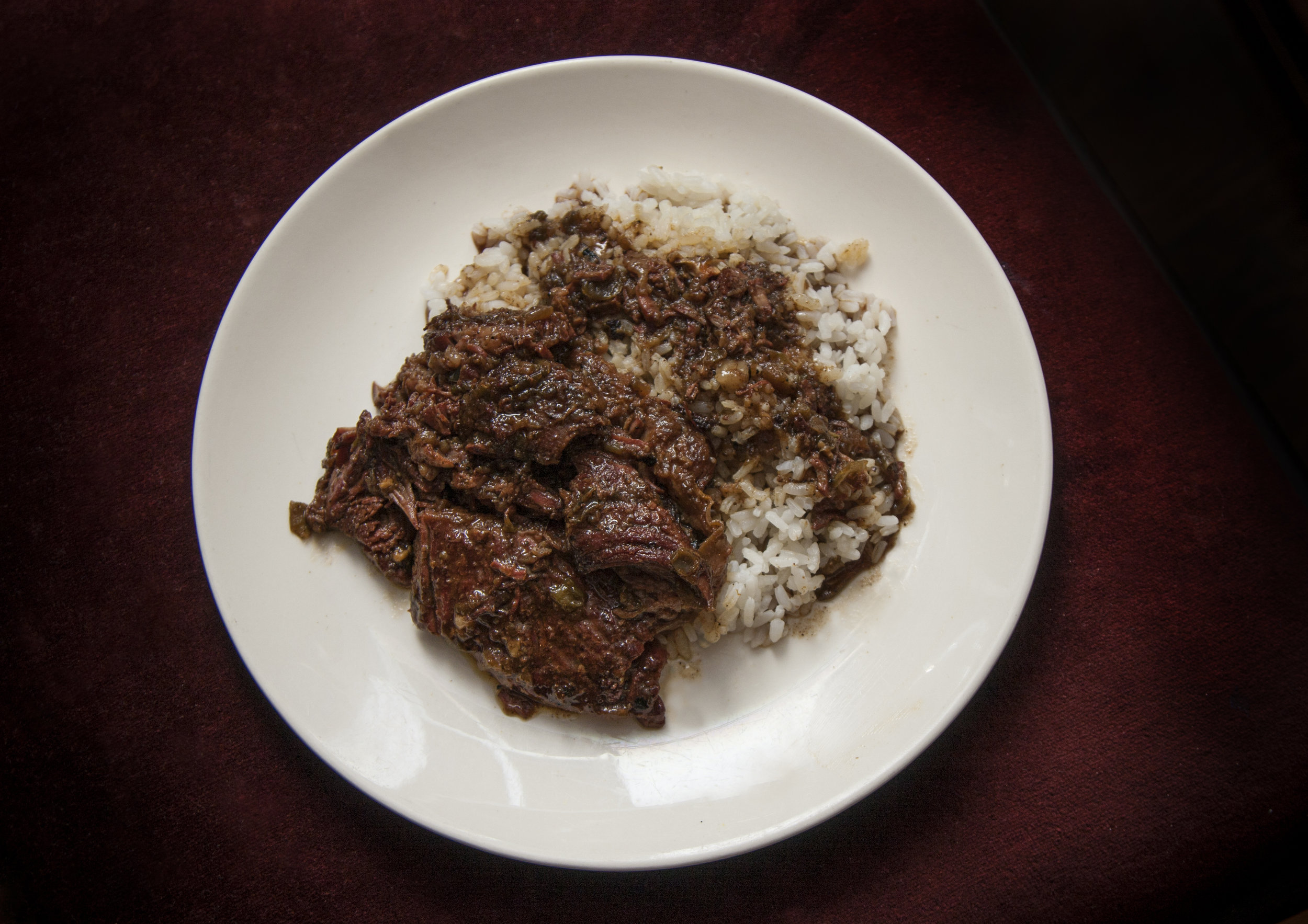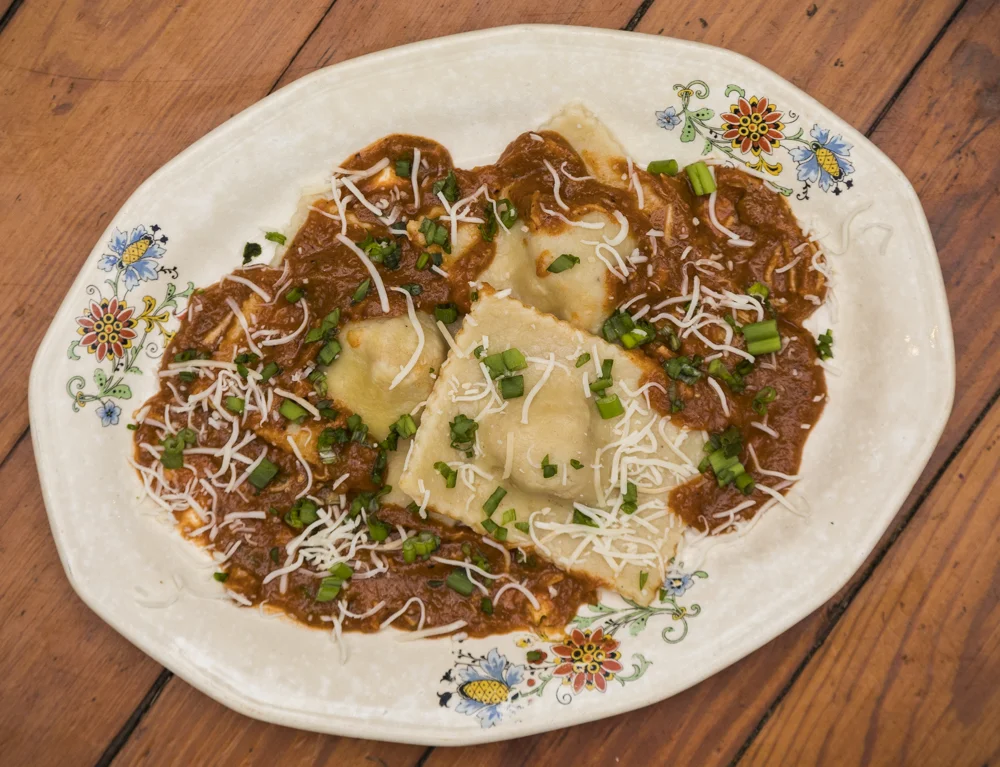Ham Hock Ramen

My adventure in ramen started years ago. I started with the simple dashi (pronounced dash-e) broths which led me into the Pork Tatsumaki broth world. After doing all the traditional versions I decided to add a little Southern twist to it. When I integrate Southern elements into other cuisines I prefer to just tweak it as opposed to reinvent the dish. Ramen is such a beautiful dish I really wanted to keep a lot of its original elements as to not take away from the already perfect dish it is. If you haven’t figured it out, I am a fan of all things smokey. Ham hocks have been a secret ingredient of mine in many dishes. You will see them used many ways in my recipes. They just seemed a perfect match for a ramen dish. Not a drastic change. It just adds a little Southerness, with their smokey flavor and they just make sense. They are a cheap cut of meat easily available in the South. It took me a few tries to really get a broth that satisfied all my needs for my bowl of ramen. There are a few rules I am sure I am breaking but, this is not traditional ramen so I have no rules to follow. At first, I kept missing something when I would make just the pork broth. Then I realized I missed the dashi flavor in my ramen. So I decided, screw it, I’ll combine the two. This will either be amazing our so foul the dog won’t even eat it. Luckily it was not the latter.
Ramen is a labor of love. A proper broth should take at least 24 hours. I actually start 3 days in advance (I am annoyingly obsessive that way.) If you're looking for homemade ramen noodles you will not find it here. I have already spent 4 days cooking broth, pork belly, eggs and black garlic oil, so if my guests want to judge me for store bought noodles they can do it outside, with their empty bowls in their hands. It may seem like a lot of time and effort for ramen but please believe me it is worth it. Make a giant batch and freeze it! When I serve this ramen all gets quiet on the porch then all you hear are slurps and moans (umm get your mind out of the gutter, those are traditional soup eating noises). In the past, I have tripled this broth and still, not one drop left at the end of the night. No matter if 5 or 15 people come, it is all gone, every time.
This is a show stopper dish. This is what you pull out when you need to impress the boss or make that frenemy eat their words. We have a "most beautiful bowl" contest when I make ramen. Your prize? Well, a bowl of ramen of course! And a picture posted on the all the Facebooks and Instagrams. Usually, it is a heated competition between our two tiniest ladies, April and Julie. Julie has gone as far as illegal stacking seaweed to support her condiments for a prettier picture. Y'all - I swear we do have lives but this is ramen people - that's some serious shit. You will see the best and worst of people on Ramen Night. On one side is your grumpy friend, all of sudden with a smile on their face and having a pleasant conversation and on the other side, you will see a usually sweet gentle friend glaring daggers at someone they swear has taken more broth than is decent. There are silent rules in the ramen business and newbies learn the hard way. If you dare to put a pinch of noodles and then fill your bowl with broth, you will feel as if the whole porch is silently chanting, ”shame, shame, shame” at you. Second helpings are a free for all - all rules are off the table. You will notice the true ramen lovers will sit on the couch closest to the kitchen and quickly make their first bowl disappear for they have learned that it is the second bowl that is the true prize. For there is only a few that will win this holy grail of Ramen Night.
Ingredients are simple, yet complicated (kind of like my whole entire twenties). I’ll start with the pork broth because that is where you should start.
Hammocks, pig bones, and fat back. The hammocks come pretty much the same everywhere. As for the pig bones, I buy what the Asian market or supermarket has to offer. You need more bone than meat no matter what. Pig trotters are usually readily available. If you can’t find it in your meat display go talk to your butcher. Tell them that you are making a stock and you need stock bones. Most of the time they will have some on hand. Try to get them to cut them into 1-inch discs. Along with the bones, grab a slab of pork fat back. Now here in South Louisiana pork fat back in its natural form is almost impossible to get because it's used to make cracklins (so good.) So I buy the packaged salted fat back. If you are also forced to do this please remember to not salt your broth till the end because this salted pork will add salt to your broth as it cooks.
The veggies are pretty straightforward onions, leeks, mushrooms, garlic, and ginger. What's great, is everything can be roughly chopped since it's going to be cooked down in the stock. For the dash, the choice is yours. There are many types of dash - kombu (kelp), iriko (anchovies), katsuobushi (bonito flakes) and mushroom are the main ones. I've tried all of these separate and combined. My flavor combo is kombu, katsuobushi and mushroom. The iriko is good but I enjoy the ease and flavor of the bonito flakes just as much. This dashi can be used alone for a lighter Ramen.
Prep and Finished Product
Put your raw bones on a cookie sheet and drizzle with a small amount of oil. Toss to coat. Roast the bones in a 450-degree oven till they are a golden brown color. While the bones are roasting char your veggies in a cast iron skillet. Put the water on and add the veggies as they are charred. When the bones are done use tongs and remove them from the cookie sheet and add to stockpot. Add ham hocks and fat back to stock pot. Bring broth to a rolling boil. Skim off any of the gray or black scum that appears. Reduce heat to a simmer and cover. Check the pot every 15 minutes until it comes to a gentle boil. Adjust heat as necessary to keep a gentle boil. After 4 hours remove fat back making sure it is tender and the fat is soft. Put fatback in a sealed container and set aside in the fridge for later. Cook broth for at least 6 hours longer. I usually do 8-10 hours more. Personally, like start this broth 4 hours before bedtime and once the fat back is removed I turn it to a simmer and make sure the bones are covered with a couple inches of broth, then let it continue cooking overnight. If leaving the pot unsupervised freaks you out just keep it at a rolling boil making sure that the bones are always covered by the liquid. Once done, strain till you have a nice clean broth. Cheesecloth in a fine mesh strainer will give you a very clean broth. At this point, if the broth is not reduced to three quarts put the pot back on the heat and reduce to three quarts. Once reduced, remove from heat and skim off fat. Now, this is what I think is an important step. You can skip it if you're on a time crunch but I truly feel it makes a world of difference. I put my stock in an airtight container and put it in the fridge for 12 to 24 hours. If it was cooled long enough it should solidify into an almost jello like consistency. When you remove it the fat should have solidified on the top and you can gently scoop it off, leaving only your broth.
While my broth sets in the fridge, I prepare my dash. It's simple- cover your kelp, mushrooms and bonito flakes with water in a large bowl and let soak for 8-10 hours. Traditional ways have you boiling at the end of the soaking and adding the mushrooms and bonito flakes then boiling a little more. I used my soaking method several times and its worked for me. Dash, from what I tell by my research, is very much a personal thing. So if you ever have the time, research and experiment to find what combo and cooking technique you prefer. Once you are ready, strain your dash and set aside. Remove your broth and fat back from the fridge. In a large pot, set your broth over medium heat and bring to a simmer. The broth is still pretty thick, this is where my dash comes in. I like to add the dash in cups till I get the consistency of the broth I want. Silky but not heavy on the tongue. So here is where it gets a little tricky. I like to season at this point. Just a little since most people will make their ramen to their liking. I tend to add a little soy sauce just for a little punch. Some people add miso, fish sauce, salt etc. I like using a little soy because it amps the flavor but still allows my guest to personalize the seasonings in their ramen. Once you have the flavor you want it's time to put the fat back...back. I trim off any harder skin areas to only reveal the soft fatty part. Mince your fat very finely. Bring your broth to a gentle boil and whisk (I mean really whisk. None of this noodle arm whiskin. Show that fat who's boss.) Put in half of your minced fat until it melts, forming glistening spots on your ramen broth. In my house people love fat so I usually add half and whisk, then put some on the side, in a bowl so my fat lovers can add it in their bowl to their poor heart's delight. If you know that your people want the whole thing, you go for it. Part of the fun of ramen is personalizing it. At this point, you can prepare some noodles and gather your condiments. I serve it with pork belly, eggs, and black garlic oil. All these recipes are here on Porch, Wine & Gravy (just click the links.) A list of condiments are listed following the recipes below.
Ham Hock Ramen Broth Recipe
4-5 smoked hammocks
3lbs of pork bones or trotters
2tbs vegetable oil
1 large onion
12 garlic cloves
1 3 inch knob of ginger
2 whole leeks washed and roughly chopped
2 bunches of scallions (white parts only - save the green tops for serving the ramen)
6 ounces of mushrooms
1lb slab of pork fat back (you may have to use the salted fat back) *if you don't like the extra fat you can skip this step.
1. Place bones in a 400 degree and roast till golden brown.
2. Put hammocks and roasted bones in a large stockpot and fill with water. Bring to a boil.
3. As you are waiting for the stock to boil heat up a heavy skillet over high heat till lightly smoking. Char the garlic, onion, and ginger on all sides. Takes about 15 minutes.
4. Add charred veggies to the stock pot along with leeks, scallion whites, mushrooms and fat back.
5. Bring the pot back to a rolling boil and skim off any scum that appears.
6. Reduce the heat to a simmer and place a lid on the stockpot.
7. Check the pot every 15-30 minutes to make sure it’s maintaining a slow rolling boil. Adjust heat as necessary.
8. After about 4 hours check the fat back. If it is tender and the fat is soft remove from the pot.
Seal in an airtight container and place in fridge till you are ready for it.
9. Put the lid on the pot and continue cooking it on a slow boil for 8 more hours. (A lot of time I will turn the heat down to a slow simmer and add water a few inches over the bones, then leave the pot to simmer overnight.)
10. Check the pot occasionally to make sure the bones are submerged and it is still at a slow rolling boil. Add water as necessary.
11. After 8 hours take the lid off and strain out the veggies and bones (I use cheesecloth in a mesh strainer to really get a clear broth.)
12. Put broth back on the stove and bring to a slow boil reducing to about 3 quarts, skimming fat from the top and discard.
13. You have two options at this point: A- Skip to step 15. B- Put your broth in an airtight container 24 hours or at least overnight. (I prefer this method because the flavor as it sits.)
14. Once you are ready for ramen, remove the broth from the fridge and scrape off the fat cap. Place the Broth in the pot and heat up to slow rolling boil.
15. Your broth should be pretty thick at this point. I add my dash a cup at a time till it reaches the consistency I desire. Silky but not heavy on the tongue.
16. This is where you add seasonings you desire. Because I have to use salted pork I usually have no need to add salt so I just throw in a couple splashes of soy sauce.
17. Once you have your seasoning where you want. Let the broth simmer as you remove the fat back from the fridge.
18. Trim of any rough parts of the fat back leaving only the soft fat. Finely mince your fat.
19. Bring pot back to a rolling boil and add your desired amount of fat. Whisk very vigorously till the fat melts and forms small puddles on top of the broth.
20. Keep your broth warm while you prepare your noodles of choice.
21. The broth is now ready to serve.
Dashi Recipe
6 cups of water
2 sheets of nombu (seaweed) torn into pieces
3/4 cup dried mushrooms
3-4 teaspoons bonito flakes
Put all ingredients in a bowl and let steep overnight. Strain and set aside to add to the finished pork broth.
I serve my ramen with:
Ajitsuke Tamago (marinated soft boiled egg)
Condiments and veggies we put out for people to personalize their Ramen.
Soy sauce
Fish sauce
Sesame oil
Hot sesame oil
Chili oil
Siracha
Chili paste
Green onions
Enoki mushrooms
ean sprouts
Cilantro
Fresh Jalapeños
Limes
Thank you, Chef J.Kenji Lopez-Aly from Food Lab for providing a great detailed recipe for me to experiment with.





















